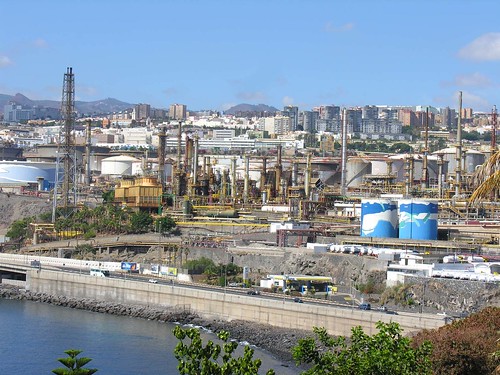
Oil is a dirty word in the Canary Islands these days as protestors hoist their banners against permission for exploratory drilling around the western islands. The industry is nothing new to the islands, the Cepsa refinery has been part of the landscape on the approach to Santa Cruz since 1930 so with a few days of free guided tours on offer I thought it was about time I got to see how it all worked.
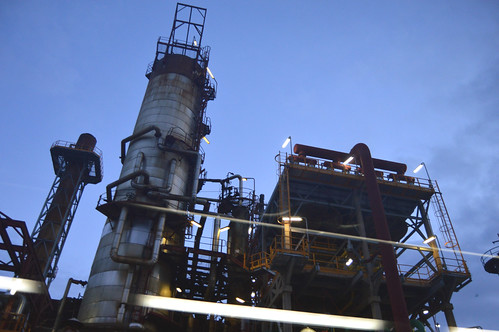
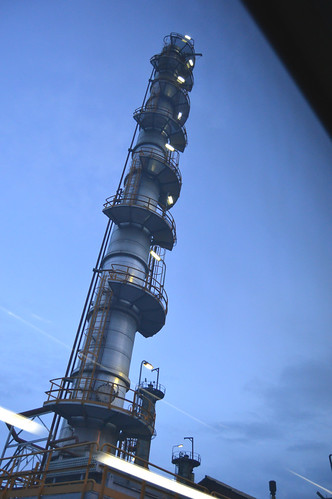
Massive, that’s the only way to describe the 500,000 square metre complex, the outside view did little to prepare me for the sheer scale of the pipelines, storage tanks, and towers. Two coach loads of us were picked up from outside the capital’s bus station, it’s currently overshadowed by three oil rigs in port for repairs, another clue to the timing of the open doors charm offensive. Driving into the complex the first thing I noticed was the big self contained bomberos station with some pretty heavy duty fire fighting power parked outside. It’s not all hard nosed science and technology, they’re a nostalgic lot, the original iron gates of the refinery and a scattering of early equipment had their own proud corner.
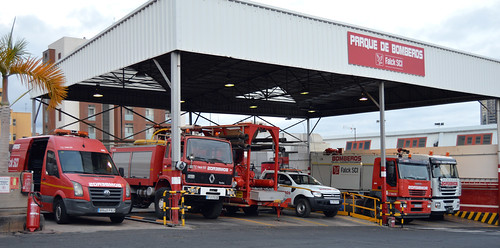
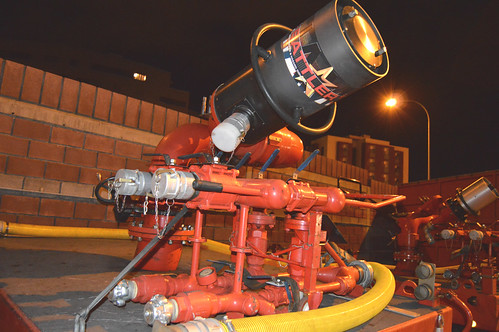
First stop was a presentation in the exhibition hall, a whizz through the company history and some off their background. Cepsa has a presence in four continents and 15 countries including depots in the Tees and West Thurrock, Sussex areas of the UK. CEPSA (Compania Española de Petroleo SA) is these days owned by Abu Dhabi based IPIC (International Petrol Investment Company) and employs 11,000 people, 400 in Santa Cruz. The distillation process provides gas, electricity, and asphalt as well as the more obvious petrol, crude oil, and specialist fuel for planes and boats. I was eager to see the nuts and bolts of the refinery, back on the coach we took a slow drive through the interconnecting streets, they are all named like in a small city.
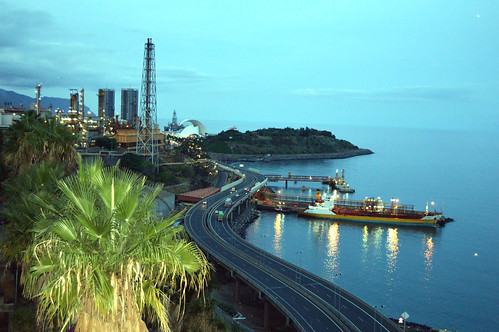
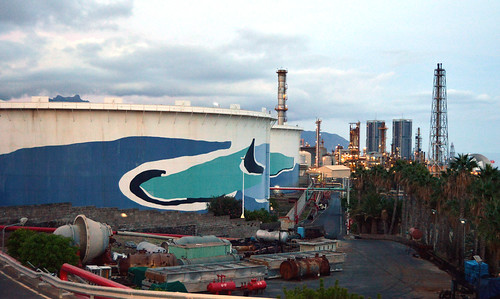
Dusk was falling and the towers and tanks towered over us, it was noticeable that hardly any people were around on foot and warning signs marked the different levels of restricted access. A scrap metal dealer would have been licking his lips at this point, I was mesmerized by the assortment of valves and controls, there were also emergency warning alarms at various points and fixed metal hoses trained on some of the key areas. There’s even a small ravine, Barranco del Hierro, that runs down through the plant. Arriving at the top end of the site we were able to walk around the viewing platform that looks over the motorway to the small port where petrol tankers can dock.
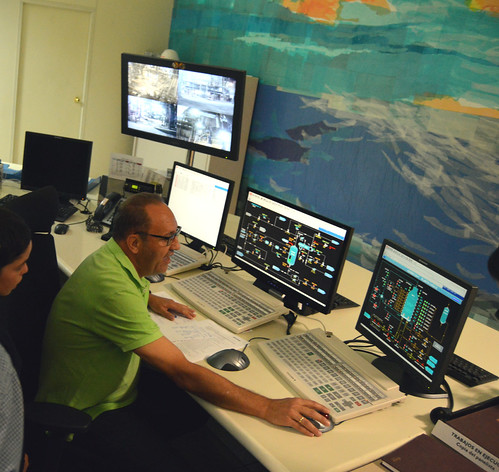
Next stop was the nerve centre, the control hall where everything is constantly monitored. The pipeline plans on the computer screens were like a complicated train network and everything from temperature to pressure is watched over. I was surprised at the relaxed atmosphere; I would have been constantly on edge if I had so much responsibility at my fingertips. The system allows any section of pipe work to be closed down instantly in the event of an emergency. Cepsa do a lot of sponsorship in the Canarian community, I was pleased to see a signed and framed CD Tenerife shirt holding pride of place in one of the inner management offices.
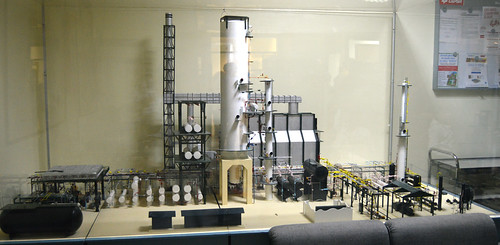
Our last stop was outside the reception area where children were encouraged to clamber inside a large fire truck while we enjoyed a buffet and drinks. The three hour tour was very slick and informative, there has been much media discussion about possible closure of the plant and plans produced for a leisure development on the site but I would imagine it would take years and a pretty impressive socket set to dismantle this giant.